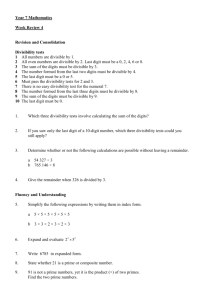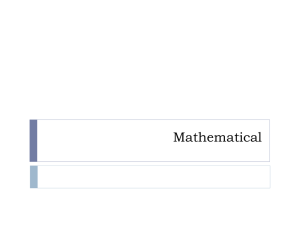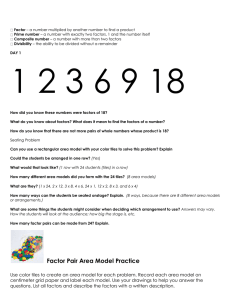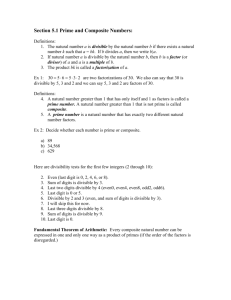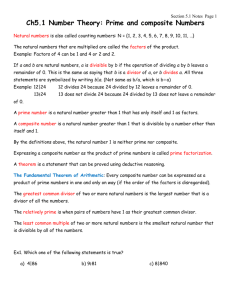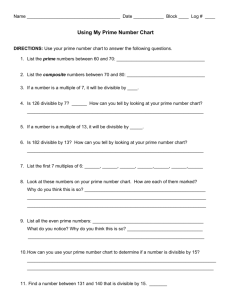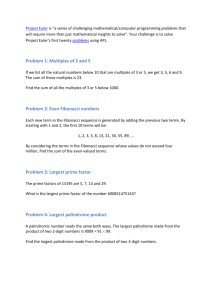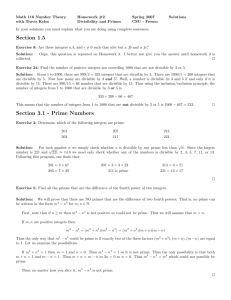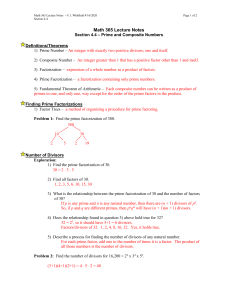Write Paragraph: Q3 - University of South Alabama
advertisement
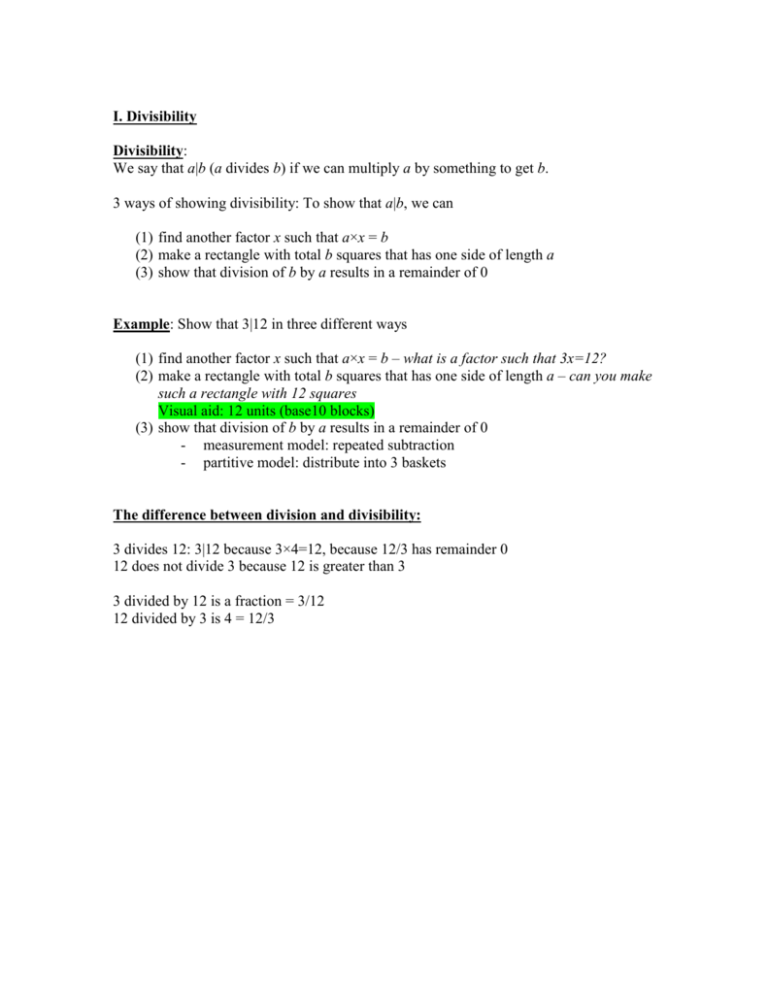
I. Divisibility Divisibility: We say that a|b (a divides b) if we can multiply a by something to get b. 3 ways of showing divisibility: To show that a|b, we can (1) find another factor x such that a×x = b (2) make a rectangle with total b squares that has one side of length a (3) show that division of b by a results in a remainder of 0 Example: Show that 3|12 in three different ways (1) find another factor x such that a×x = b – what is a factor such that 3x=12? (2) make a rectangle with total b squares that has one side of length a – can you make such a rectangle with 12 squares Visual aid: 12 units (base10 blocks) (3) show that division of b by a results in a remainder of 0 - measurement model: repeated subtraction - partitive model: distribute into 3 baskets The difference between division and divisibility: 3 divides 12: 3|12 because 3×4=12, because 12/3 has remainder 0 12 does not divide 3 because 12 is greater than 3 3 divided by 12 is a fraction = 3/12 12 divided by 3 is 4 = 12/3 Shortcuts: Tests for Divisibility examples for divisibility by 11: 5346 is divisible by 11: add digits with odd powers of 10 place values: 3 + 6 = 9 subtract digits with even powers of 10 place values: -5 -4 = -9 9-9=0 is 0 divisible by 11? 76,543 is not divisible by 11: add digits with odd powers of 10 place values: 3 +5 +7 = 15 subtract digits with even powers of 10 place values: 4 +6 = 10 15-10=5 is 5 divisible by 11? Mini-Lecture: Primes Primes and Composites Every counting number greater than 1 is a prime number or a composite number. Prime number: only divisible by itself and 1 (examples: 2, 3, 5, 7, 11) Composite number: divisible by a number in addition to itself and 1 (examples: 4, 6, 9) The number 1 is not prime or composite by definition. Factor Trees – factoring a number into a product of primes 12 can be factored in different ways, but always results in the same end branches. Fundamental Theorem of Arithmetic Each composite number can be expressed as the product of primes in exactly one way (except for the order of factors). Understanding Prime Numbers A number P is prime if it has no divisors other than itself and 1. (1) you can’t factor P using smaller number than P not prime: 33 = 3×11 prime: 31 has no divisors (2) you can’t make a rectangle with P units unless the rectangle is 1×P not prime: 33 can be modeled using a 3×11 array prime: 19 must be 19 units long! (2) a prime number is not divisible by any number other than itself and 1 notice all numbers are divisble by themselves: P/P = 1 notice all numbers are divisible by 1: P/1 = P so being prime means no extra divisors Finding Prime Numbers: Sieve of Eratosthenes

